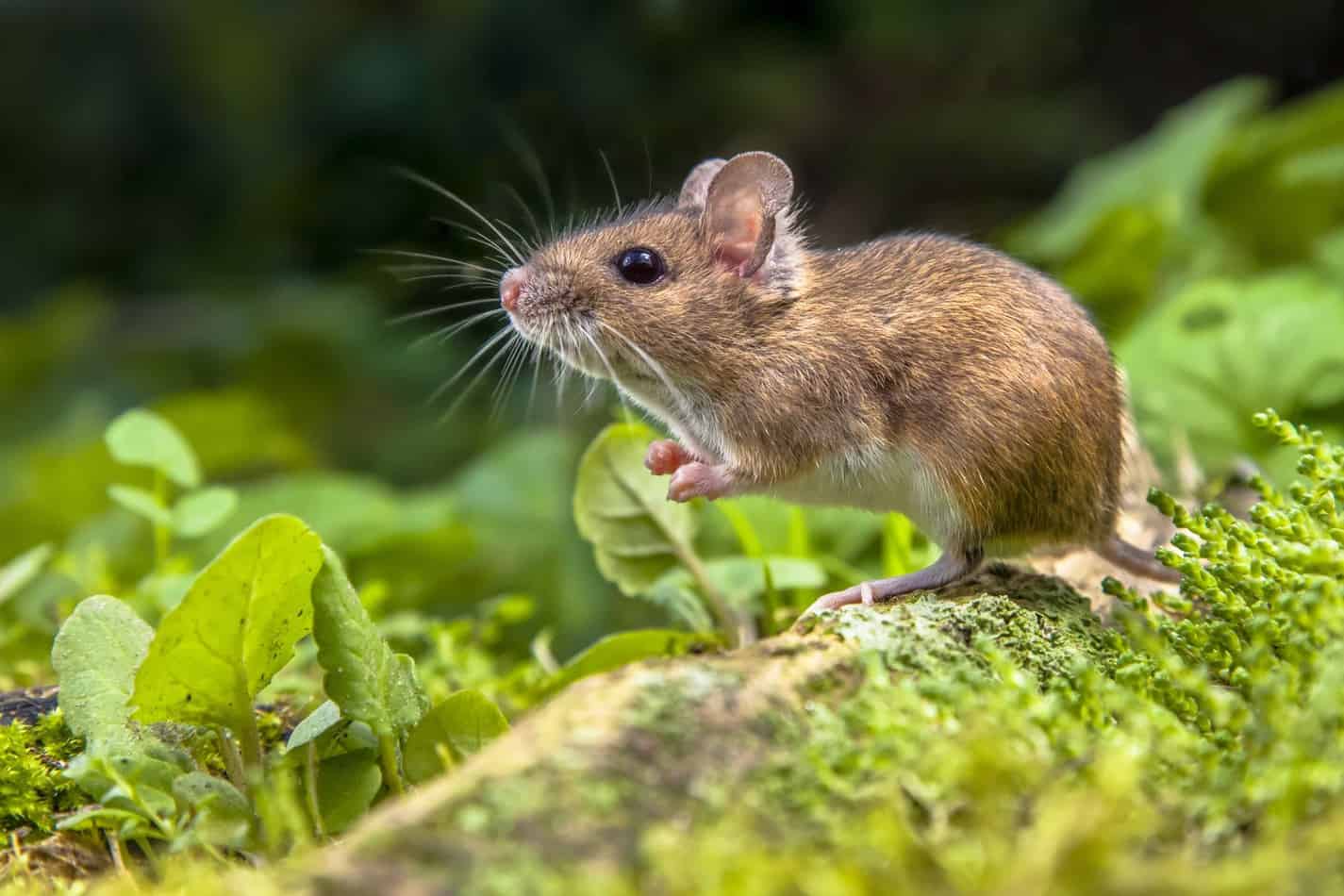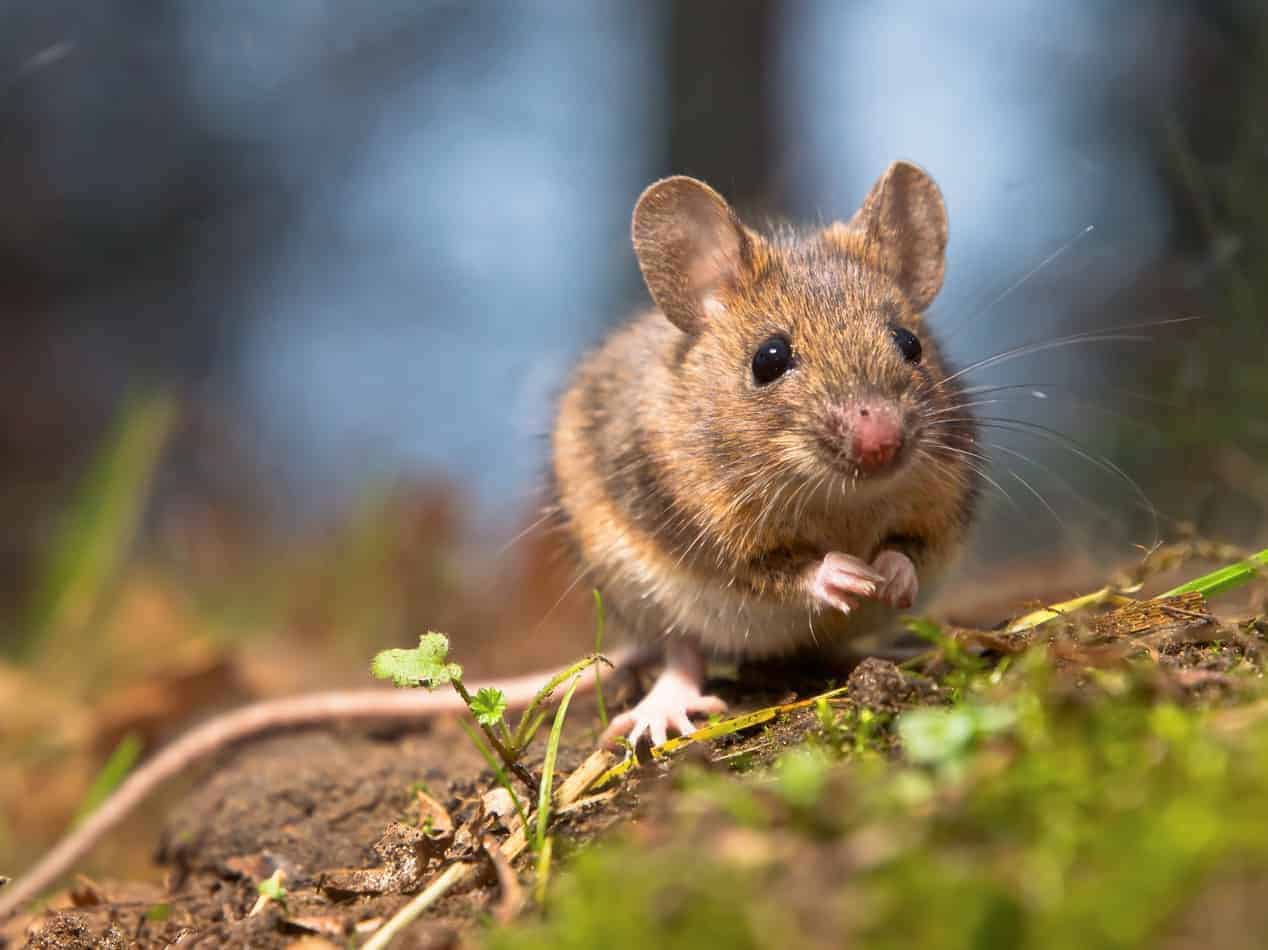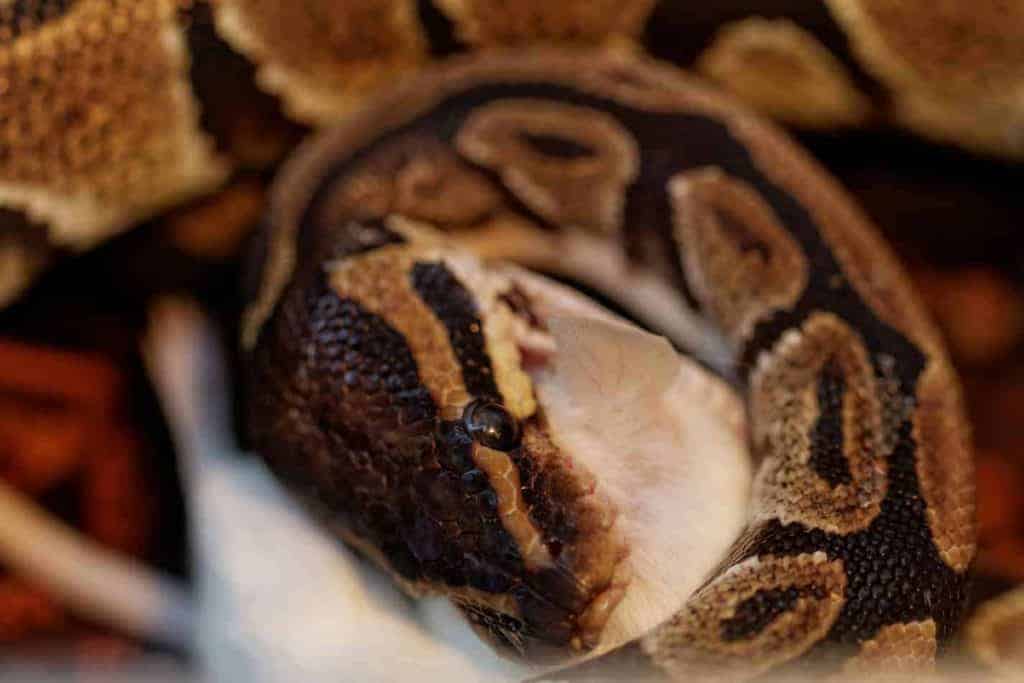Can Pet Snakes Eat Wild Mice?
I have always wanted to know if pet snakes are able to eat wild mice. Curious as I am, I did some research and here is what I found out.

can pet snakes eat wild mice?
While pet snakes are able to eat wild mice it is not a good idea to use them as a food source. Wild mice carry bacteria that may be harmful to your pet. They may also bite your snake if you attempt a live feeding.
Wild mice are dangerous to pet snakes. They could get your snake sick or injured if they are placed in a cage together. Let’s go over some reasons why it is a bad idea to use wild mice to feed your snake.
Why Feeding Your Pet Snake Wild Mice is a Bad Idea
I will admit that there is a lot of appeal to feeding your snake a wild mouse. After all, it does seem more “natural”. A mouse captured in the wild may supposedly be better for your pet’s health than a mouse raised in a lab.
There is also a financial appeal. There is a seemingly infinite supply of wild mice out there, and unlike store-bought mice (which could cost $5.00 a pound) nobody is charging you for a wild mouse. So why would it be a bad thing to use them for feeding?
Well, for one thing, wild mice carry foreign bacteria that your snake probably hasn’t encountered before. Your pet snake doesn’t get out of his cage a lot, and that’s fine, but it also means he isn’t very accustomed to new diseases.
Your snake is liable to get sick just as often as we do, but it is way harder to tell if your snake is feeling under the weather. He won’t let you know by whimpering like a dog and his physical appearance won’t change much so it can be hard to tell.
If you let your diseased snake go too long without being treated, he may be seriously hurt or even die. That means bringing a lot of risk to your pet just to give him a “natural” meal.
Speaking of natural, a lot of people feel that it may be better to use live wild mice because that’s how snakes feed in the wild. We should try to recreate the natural conditions of a snake’s habitat as closely as possible right? Well, not exactly.
In fact, I just recently wrote an article about whether or not pet snakes could even survive in the wild. In the article, I talk about what the wild even means, and why it’s harmful to give our pet snakes those experiences. Find it here.
In the wild, snakes often are attacked, maimed, and killed, but I don’t want to subject my pet to that. Remember, if you put a live wild mouse in your snake’s tank, the mouse won’t go quietly.
It will struggle to survive and your snake could be scratched or bitten, which would leave him vulnerable to infection.
Even if you kill the wild mouse beforehand, it could still be laced with harmful bacteria. And if you really want to go through all the trouble of finding, killing, and sanitizing a wild mouse for your snake to eat, you might as well just let your pet go.
Why would you go through all that effort for a meal that isn’t any healthier for your snake? At this point, if you still feel strongly about feeding your pet snake wild mice, then be my guest.
If you are still determined to expand your pet snake’s diet, then here are some better alternatives to wild mice.

Is Feeding Live Animals To Snakes Dangerous To Pet Snakes?
Hunting their food is not natural for a captive snake, and it is an unnecessary risk as the rodent can injure the snake. Rodents have sharp teeth and claws that can easily penetrate a snakes eye or skin as it fights for its life.
This can lead to injury or to disease from infection and even death. Also, if the rodent is too large for the snake, or if your snake is not hungry, it will ignore the rodent. The rodent, responding to its fear-or hunger- will attack the snake.
So, unless you want to chance coming back to a dead, sick, or wounded pet, it would be safer and smarter to avoid live prey and stick to the frozen options.
Healthier Alternatives to Wild Mice
In the wild, snakes eat a wide assortment of different things. From rodents to eggs, there’s a plethora of options. It is good to give your snake some different options every once in a while, so here are some better options than wild mice.
Insects. A lot of smaller snakes like corn snakes or garter snakes enjoy crunching on tasty insects from time to time. Insects are much smaller than snakes, and won’t be able to bite or hurt your snake like a wild rodent would.
Some great insects to feed to your pet are crickets, cockroaches, and insect larva. In the wild, snakes will eat a lot of these and help keep the pest population down.
Before placing an insect in your snake’s cage, make sure you thoroughly wash your hands. Any unfamiliar scent on the insect will ruin your snakes appetite and he won’t likely try to eat it.
Birds. That’s right. In the wild snakes are actually capable of killing and eating small birds. Of course if the snake is smaller than the bird, it will be in serious danger.
In the wild, snakes will slither up into a tree and find a bird’s nest. If the snake is bigger than the bird, it will kill it and eat it and continue to feed upon the bird’s eggs.
Be careful if you choose to feed your pet snake birds. Never feed your snake a live bird. Their beaks are powerful and they could seriously injure your scaly buddy. A snake is more likely to feed on a bird that has been freshly killed.
Eggs. Snakes are notorious egg eaters and are forever frustrating chickens. Snakes are so sly that in the wild, they will sneak into a nest and eat the eggs right under the beak of the mother bird.
Feeding an egg to a snake is very easy. Wash it and place it into your snake’s tank. If your snake isn’t accustomed to eating eggs then it may take him some time to catch on, but most snakes will eat them eventually.
Eggs are a great source of protein to reptiles and are it’s highly recommended you give your snake one as a treat every now and then.
Water snakes are also known to feed on fish eggs. So you may want to try those as well. I recently wrote an article all about whether or not snakes could eat eggs. In this article, I outline what kinds of snakes can’t eat eggs, and what kinds of eggs to use. Find it here.
Other Snakes. Oh yes, snakes are not shy about cannibalism. In the wild, king snakes and other species will eat any other reptile they feel is encroaching on their territory. The California king snake will even eat the mighty rattlesnake if he feels like his territory is getting too crowded.
Feeding another snake to your pet snake is very dangerous. The only way I would recommend that is if the other snake is already dead.

Making Sure Your Pet Snake Eats Well
What you feed your snake is only half of the equation when it comes to their health. When and where they eat can be just as important.
We have already established that wild mice are not a good idea when it comes to feeding your pet, and we have also discussed some healthy foods other than rodents, but what else should you know about feeding your snake?
Let’s briefly discuss what you need to know.
- Use a separate feeding enclosure. Using a different tank for feeding can help keep your snake’s living area more sanitary. It also makes sure your snake doesn’t accidentally consume any harmful substrate.
- Learn your snake’s feeding schedule. A snake should be fed when he is the most active. For example, ball pythons eat mainly at dusk or early in the morning.
- Research your snake’s dietary needs. Larger snakes can eat larger mammals that smaller ones won’t be able to handle. Water snakes are able to eat fish and fish eggs. Figure out the best options for your snake.
Feeding your snake is not easy, and finding out what’s best for your snake will take research and experimentation. Take time to find out the best things for your little friend and he is sure to live a great life.
Snake Safety Tips:
- Leave the snake alone. If you don’t bother it, it won’t bother you.
- Use snake prevention techniques on your home and property
- Use specialty snake handling tools
- Wear snake boots and/or gators when walking through snake country
- Wear gloves
- Wear glasses, Spitting cobras tend to aim for the eyes
- Buy a snake trap
- Hire a professional snake removal expert
- Learn about snake species, especially those in your area
- Don’t try to kill snakes
Additional Questions
How often do snakes feed in the wild?
This all depends on the size and age of the snake. Younger snakes will generally eat more often than older ones, about twice a week.
Older snakes only need to eat once a week to once every few weeks. Female snakes will up their feeding as breeding season approaches.
What do baby snakes eat?
Snakes don’t eat till after the first couple of weeks of life. A baby snake will continue to survive on the energy acquired from its egg. After a couple of weeks, a snake will shed and then begin to feed.
A baby snake will usually eat small rodents and insects. When it reaches maturity, it will feed on larger prey.
How Long Does It Take A Snake To Digest A Mouse?
2-3 days. However, just like humans, the larger the meal the longer it takes to digest. It is also easier for snakes to digest in warmer temperatures. Conversely, a large python who consumes a deer may spend weeks digesting. So it is best to wait 24 to 72 hours after your snake has fed before holding him.
How Long Can A Snake Go Without Eating
This also depends on the age and size of your snake, but a baby snake can generally go for 5-7 days, while an adult will be just fine for 7-10.
What Animals Eat Snakes?
Many species of birds such as owls, hawks, falcons, herons, etc. are predators to many different kinds of snakes. There are also lots of snake species which eat only other snakes. So mostly, birds and other snakes are the common predators. Also, plenty of mammals include snakes in their diets.
Can Snakes Eat Humans
Very few snakes are large enough to swallow an adult human. It is impossible for the little snakes to do so. But, it is possible for it to happen with large snakes. The only ones large enough to do so are:
Green anaconda
Reticulated python
Burmese python
African rock python
Amethystine python
Indian python
How many years can a snake live?
Generally, the larger a snake can grow, the longer it can live. Boas usually live for 25 to over 50 years. Many colubrids have a life-span of between 15 and 25 years and smaller species live for 5 to 10 years
Do pet snakes recognize their owners?
They may possibly recognize their owners by scent. However, they don’t care about their owners. They can detect their owner’s heat signature, and the owners smell or taste.
What animals are immune to snake venom
The hedgehog (Erinaceidae), the mongoose (Herpestidae)–due to specialized receptors and thick fur–, the honey badger (Mellivora capensis)–because of its practically impenetrable thick skin–, the secretary bird (Sagittarius serpentarius), and a few other birds that feed on snakes.
These animals aren’t just immune to snake venom or difficult for snakes to kill but are good at attacking snakes. The honey badger has an extremely strong and powerful jaw that can easily crush the head of a snake. Birds also seek to crush the snake which it can do with its talons or by dropping it from a ridiculously tall height. This is why snakes prefer long grass and are wary of crossing large open spaces because of the threat of birds. So, a great way to keep your yard free of snakes is by having a large lawn with short grass.
